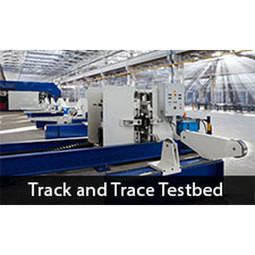Download PDF
How the National Association of REALTORS® Improved Member Services with Hyperledger Fabric
Technology Category
- Application Infrastructure & Middleware - Blockchain
Applicable Functions
- Business Operation
Use Cases
- Asset Lifecycle Management
Services
- Data Science Services
- System Integration
The Challenge
The National Association of REALTORS® (NAR) is America’s largest trade association, representing 1.3 million members involved in all aspects of the residential and commercial real estate transactions. Members belong to one or more of approximately 1,200 local associations/boards and 54 state and territory associations of realtors. All of these organizations are independent, even though they work together. NAR was looking for ways to better serve their members and felt that analyzing members’ engagement would help them achieve this goal. Unfortunately, member engagement events were only available to the association where the event occurred. Getting over 1200 CEOs to agree to give up control of their data and processes by switching to one common database sounded unlikely.
About The Customer
The National Association of REALTORS® (NAR) is America’s largest trade association, representing 1.3 million members involved in all aspects of the residential and commercial real estate transactions. Members belong to one or more of approximately 1,200 local associations/boards and 54 state and territory associations of realtors. All of these organizations are independent, even though they work together. The various local and state associations are independent corporations working together to deliver programs under a Code of Ethics that is over a hundred years old. There is an existing centralized database containing members’ billing information. Engagement information such as volunteerism, professional development and committee service is not shared.
The Solution
NAR used Hyperledger Fabric to build the REALTOR® Association Blockchain (nicknamed BlockR), a blockchain-based tool for recording and sharing information about member engagement across the nation’s realtor associations. Hyperledger Fabric is a blockchain framework implementation and one of the Hyperledger projects hosted by The Linux Foundation. Intended as a foundation for developing applications or solutions with a modular architecture, Hyperledger Fabric allows components, such as consensus and membership services, to be plug-and-play. Hyperledger Fabric leverages container technology to host smart contracts called “chaincode” that comprise the application logic of the system. The team created the REALTOR® Association Blockchain (also known as BlockR), a blockchain-based tool for recording and sharing information about member engagement across the nation’s realtor associations.
Operational Impact
Quantitative Benefit
Related Case Studies.

Case Study
IIC - Track and Trace Testbed
Factory systems can detect - within a meter - the location of a tool; Misuse of tools can result in serious accident or injury; The production of many industrial and consumer goods requires exacting work - down to the precise force used to tighten a screw. GOAL Manage smart, hand-held tools in manufacturing, maintenance, and industrial environments

Case Study
Coca-Cola Refreshments, U.S.
Coca-Cola Refreshments owns and manages Coca-Cola branded refrigerators in retail establishments. Legacy systems were used to locate equipment information by logging onto multiple servers which took up to 8 hours to update information on 30-40 units. The company had no overall visibility into equipment status or maintenance history.

Case Study
IIC Asset Efficiency Testbed
A recent study on maturity of Asset Efficiency from Infosys and the Institute for Industrial Management (FIR) at Aachen University revealed that 85 percent of manufacturing companies globally are aware of asset efficiency, but only 15 percent have implemented it at a systematic level. Current challenges include lack of instrumentation of the assets, missing real-time data analytics, lack of context due to missing information from other systems, and lack of a holistic focus with other aspects of efficiency like energy, utilization, operations, and serviceability.GOALTo collect asset information efficiently and accurately in real-time and run analytics to make the right decisions








